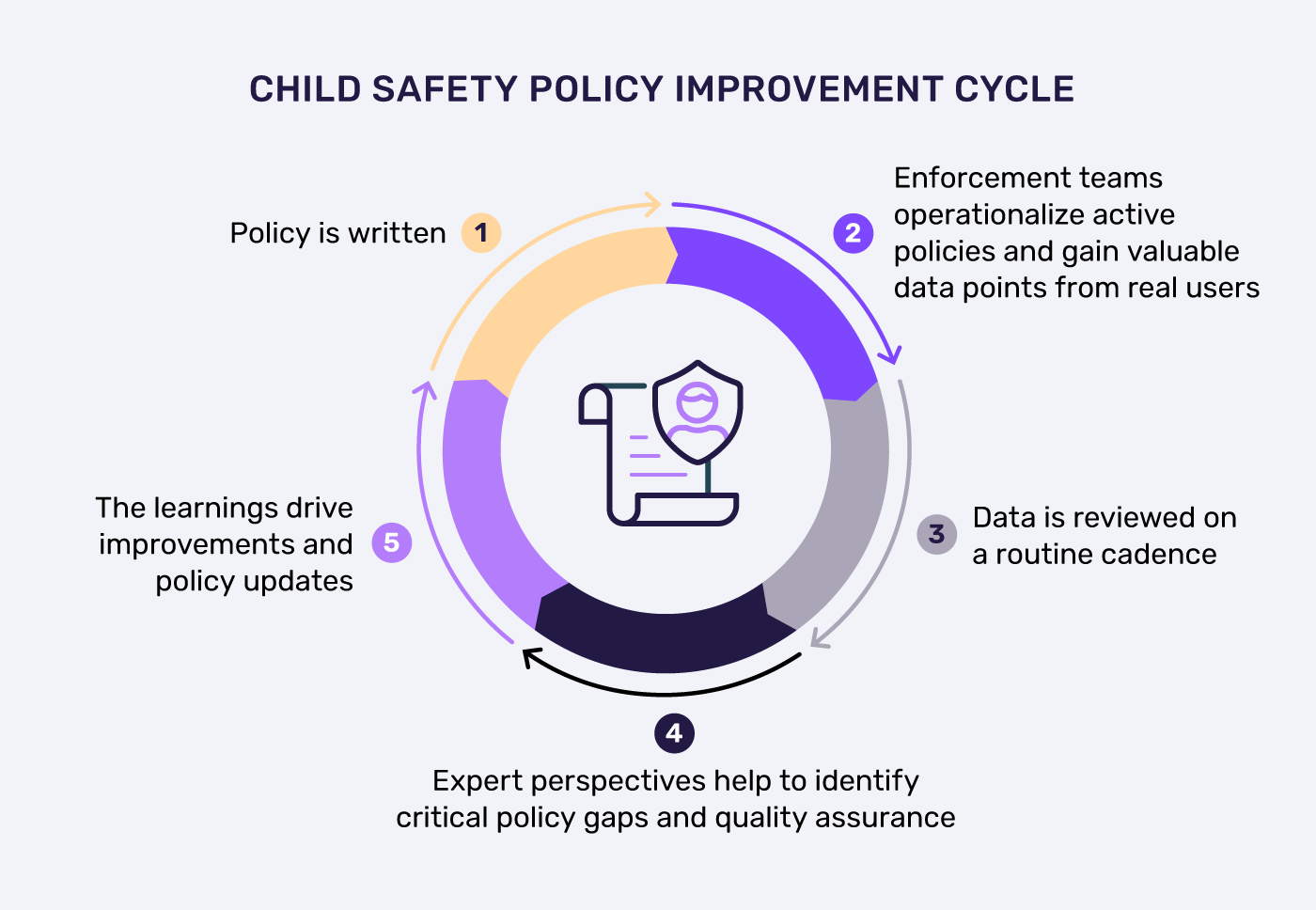Post By: Safer / 3 min read
Whether we like it or not, children have made their way onto every digital platform, including those that are age-gated and intended for adults. Bad actors also exist in these spaces, exploiting platform features to target and groom children, and to share child sexual abuse material (CSAM) at alarming rates.
As the risks to platforms mount, there’s never been a more pressing time to assess your child safety policies.
Formalizing child safety policies is indeed the first step to mitigating the risks. But child safety as an initiative is never done. As new threats emerge, policies must evolve and keep pace. Well-maintained and updated policies provide the relevant guidance that ensures children, your platform, and your users stay safe even as digital dangers shift and change over time.
Here’s what to consider as you strengthen your platform’s child safety policies.
Build your platform’s Trust and Safety muscle
The complexities of building and running a platform can create siloed teams. Prioritizing Trust and Safety (T&S) allows your company to develop clear platform policies that are understood by both users and policymakers, and easily translated by enforcement teams into scalable outcomes.
Still, building a T&S arm from scratch can be overwhelming. Fortunately, many resources and organizations exist to help support platforms in this effort, including the Trust & Safety Professionals Association (TSPA) and the Technology Coalition.
As teams review their policies, it’s important to know there’s no one-size-fits-all. The issue of child sexual abuse and exploitation includes many different terms, definitions, and nuances. And various harms and dangers overlap with this issue, which can appear differently on each platform.
Your team should take into account how your platform’s core principles, legal requirements, and practical constraints impact your policies. For anyone looking for greater considerations, the TSPA offers a curriculum that includes a section on policy development.
Anchor your child safety policies in harm reduction
At its most basic, a policy is a set of rules. Without a driving reason behind them, they lack meaningful value. That’s why, when designing child safety policies, it’s critical to anchor its “why” very clearly in reducing harm.
Establishing harm reduction as the intention behind your child safety policies officially articulates your company’s position. It also helps crystallize future policy positions as user behavior evolves over time. Additionally, it justifies adding operational enforcement capabilities for your company.
Very few policy types capture the urgency and clarity of risk that CSAM and other child sexual abuse-related policies do.
Establish a feedback loop for policy improvements
Child sexual abuse and exploitation online is complex — involving the intersection of social behaviors with ever-changing technologies. These risks also create legal and global implications for platforms.

The “always on” nature of child safety requires that platforms continuously make improvements on policies. Proactively conducting internal assessments and audits ensures policies are regularly reviewed. This process may look differently for each platform, but one way to do this is by implementing an internal feedback loop.
The feedback loop might look like this: enforcement teams operationalize active policies and gain valuable data points from day-to-day examples, and the learnings drive improvements.
Incorporate guidance from issue experts
Beyond internal data, it’s important to include expert perspectives within your feedback loop. Issue experts can help you gain clarity and identify critical policy gaps. They can also strategize with your team to address edge-case scenarios while considering harm reduction and any unintended consequences.
Incorporating expert perspectives not only saves you time but ensures your policy is comprehensive and will combat current and emerging threats. Thorn’s child safety advisory services leverage our team of issue experts to provide strategic and tactical guidance to help platform teams improve their child safety policies.
In addition, industry insights, like Thorn’s research reports, offer important data on youth behaviors and bad actor tactics that can provide valuable input for policy tweaks.
Needless to say, upholding strong child safety policies is not a set-it-and-forget-it endeavor. But grounding your policy in reducing harm makes the priority powerful. Together, we can create a safer internet. It starts with acknowledging the risks and charting a course — and policies — to tackle them.








